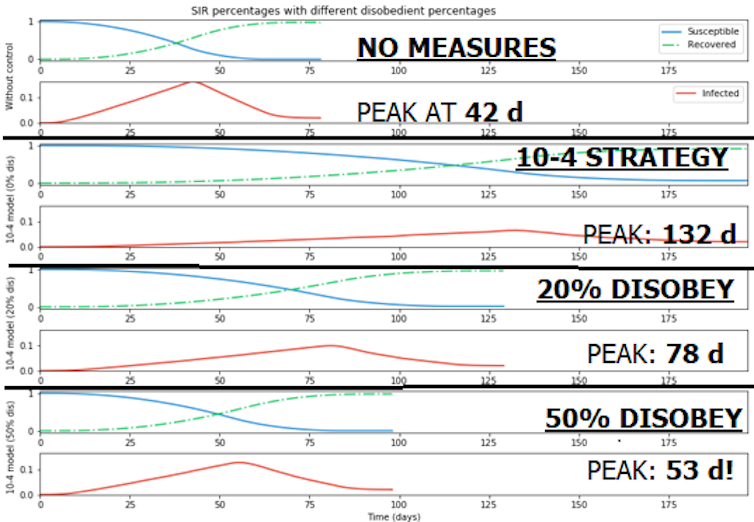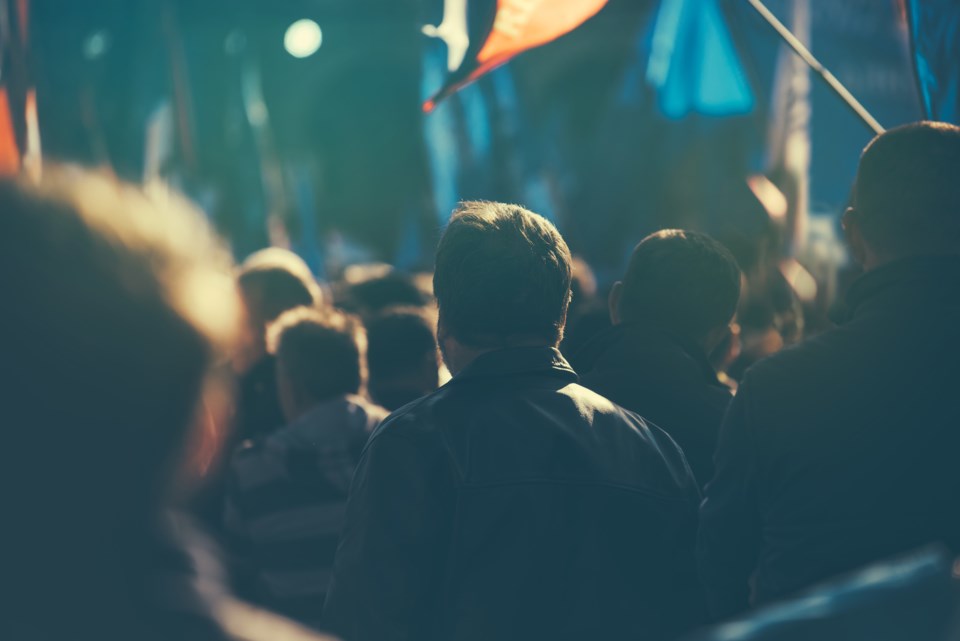The second wave of COVID-19 has arrived. Cases are spiking in most European countries, Canada is seeing the number of daily cases exceed the first peak in April/May and the United States is facing a potential third wave.
Some countries like Brazil, India and Argentina are still in the first wave. Others like New Zealand, Vietnam and Singapore have contained the virus. But the second wave has arrived in the northern hemisphere, as we confront the upcoming winter.
In most countries, the number of deaths is lower than in the first wave; we have learned more about the virus and know that the second wave is driven by younger people, which have a lower death rate. Nevertheless, the long-term effects of this wave are yet to be seen.
Mathematical modelling is used to predict the spread of diseases like COVID-19. These models must now take into consideration people’s changing behaviours and the approaching winter.
Unknown long-term effects
There is evidence that COVID-19 infection can lead to serious heart problems, which are currently being studied. Some people also experience damage to the kidneys, lungs and brain. There have also been reports of sudden deafness and “brain fog.”
We still do not know if there is immunity after infection or whether the disease will become endemic.
The second wave might have been triggered by lockdown fatigue and feelings of invincibility of young population. But coping mechanisms like denial and rationalism, combined with conflicting public health messages, can lead to population disobedience and trigger a large number of cases.
Superspreader events
We have learned important aspects about the spread of COVID-19. The pandemic has largely been driven by superspreader events, in which a single individual directly infects several contacts.
The reproductive number — known as R0 — of SARS-CoV-2 is between two and three, meaning that, on average, an individual infects between two and three individuals. The variation in the distribution — known as k — has showed that some individuals generate a large number of secondary cases: less than 20 per cent of individuals produce over 80 per cent of infections.
There have been numerous examples of superspreader events such as the outbreak associated with air conditioning in a restaurant in Guangzhou, China, the exposure of individuals at a choir practice in Skagit County, Wash., the recent Rose Garden ceremony at the White House and a spinning class in Hamilton, Ont.
The role of aerosols
We also know that the disease is driven by aerosols, which are small particles made of saliva or respiratory fluid whose size is a few microns. The U.S. Centers for Disease Control and Prevention states that the disease mainly spreads through close contact. They also state that touching contaminated surfaces (known as fomites) is not thought to be a common way that COVID-19 spreads.
Since April, we’ve learned that aerosols and indoor transmission are the main sources of infection. There is evidence that the virus can remain in the air from 15 minutes up to three hours and transmission indoors may be around 20 times higher than outdoors.
Numerous studies show that transmission is due to indoor spreading via aerosols. A recent study of 1,200 outbreaks, shows that with the exception of two incidents, most outbreaks were indoor and driven by homes and family contacts.
Paying attention to ventilation
To help reduce the probability of superspreading events indoors, we need to pay attention to ventilation. Ideally, we should conduct most activities outdoors, but when not possible, air quality should be guaranteed.
Ventilation standards like ASHRAE and MERV-13 should be mandatory, and when these are not possible, portable air purifiers with HEPA filters can reduce the probability of infection.
We can also use carbon dioxide detectors to check the quality of air indoors. And with the cold weather approaching, controlling the level of carbon dioxide and humidity indoors can reduce the probability of contagion.
Simulating behaviours
My research team works on flexible modelling methodologies that focus on spatial models and can easily be adapted to include the most recent research results.
We built a variety of models to study various aspects of the spread of SARS-CoV-2, including connectivity or mobility factors, mortality rates and interventions. We can study the potential outcomes of complex government policies, such as enforcing the use of masks or physical distancing.

We can also explore mechanisms to combine the base epidemiological models with information about the surrounding environment (buildings, transportation, open spaces). The influence of the spatial location on the model dynamics can be easily visualized to facilitate more efficient decision-making.
Simulating environments
A second aspect of our research investigates how to integrate advanced 3D building models with computer models of how the disease spreads indoors. The research focuses on the spread of viral particles through heating, ventilation and cooling (HVAC) systems in buildings. By studying the effect of humidity levels indoors or the effects of viral particle accumulation in rooms, we can better quantify the risk of COVID-19 and the effectiveness of measures to mitigate the risk.
Our advanced models use carbon dioxide as a proxy for the disease, because the sensors are cheap and sensitive to HVAC systems and room dimensions. These models can help study changes in ventilation, accumulation of viral particles over time and the influence of voice tone levels in a room.
These simulations can help to assess the risk of crowded and confined spaces, as well as close contacts.
Our next efforts should include modelling long-term side effects and paying attention to individual interactions to study the effects of lockdowns, economic aspects and uncertainty in human behaviour. Advanced tools to model these social aspects are needed to identify problems and solutions. Social aspects — including leadership, social environments, stress and coping behaviours — should not be neglected in future research efforts.![]()
Gabriel Wainer, Professor, Systems and Computer Engineering, Carleton University
This article is republished from The Conversation under a Creative Commons license. Read the original article.
